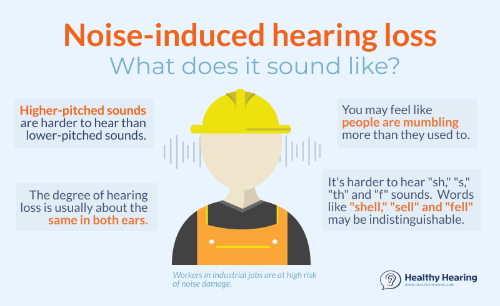Noise-Induced Hearing Loss (NIHL)

Noise-Induced Hearing Loss (NIHL): Overview, Causes, Symptoms, and Prevention
Noise-Induced Hearing Loss (NIHL) is a sensorineural hearing impairment caused by exposure to loud sounds that damage the delicate hair cells in the inner ear. It is a preventable yet irreversible condition that affects individuals of all ages. Below is a detailed overview of NIHL, including its causes, symptoms, diagnosis, and prevention strategies.
Causes of Noise-Induced Hearing Loss
NIHL can result from two main types of noise exposure:
Acute Acoustic Trauma:
- A single exposure to an extremely loud sound (e.g., gunshot or explosion) can cause immediate and severe damage to the hair cells in the cochlea.
Chronic Noise Exposure:
- Prolonged exposure to moderate or high-intensity noise over time leads to gradual damage. Common sources include:
- Loud music from personal listening devices or concerts.
- Occupational noise from power tools, heavy machinery, or construction equipment.
- Recreational activities like motorsports or shooting ranges.
Symptoms of NIHL
NIHL often develops gradually and may go unnoticed in its early stages. Common symptoms include:
- Difficulty Understanding Speech: Particularly in noisy environments.
- Tinnitus (Ringing in the Ears): Buzzing or roaring sounds that persist even in quiet settings.
- Muffled or Distorted Hearing: Sounds may seem unclear or faint.
- Trouble Hearing High-Pitched Sounds: Frequencies like birdsong or alarms may be difficult to perceive.
- Fullness in the Ears: A sensation of pressure or discomfort after noise exposure.
In children, symptoms may include difficulty hearing soft sounds and complaints of muffled speech.
Diagnosis of NIHL
- Clinical Evaluation:
- A healthcare provider examines the ears and reviews the patient’s history of noise exposure.
- Audiometric Testing:
- Conducted by audiologists to measure hearing thresholds across various frequencies, typically revealing loss in high-frequency ranges (3–6 kHz).
- Occupational History:
- For workers exposed to loud environments, detailed anamnesis helps correlate symptoms with workplace noise levels.
Treatment Options for NIHL
NIHL is irreversible as hair cells in the inner ear cannot regenerate. However, management strategies include:
- Hearing Aids: Amplify sound for better communication and improved quality of life.
- Cochlear Implants: Recommended for severe cases where hearing aids provide little benefit.
- Tinnitus Management: Techniques like sound therapy and counseling help alleviate tinnitus-related distress.
Prevention Strategies
Preventing NIHL is crucial since it is irreversible but largely avoidable with proper measures:
- Hearing Protection Devices:
- Use earplugs or earmuffs in noisy environments such as concerts, workplaces, or during recreational activities like shooting sports.
- Volume Control:
- Lower the volume on personal listening devices and avoid prolonged exposure to loud music or sounds; use built-in volume limiters if available.
- Noise Avoidance and Breaks:
- Walk away from loud noises when possible and take breaks from continuous exposure to sound above safe levels (55–60 dB for daily exposure).
- Regular Hearing Check-Ups:
- Early detection through routine audiometric testing can help manage hearing issues before they worsen.
- Educational Awareness Campaigns:
- Public health initiatives emphasize the importance of protecting hearing across all age groups.
Conclusion
Noise-Induced Hearing Loss is a growing public health concern that significantly impacts individuals’ quality of life but is preventable with proper precautions like hearing protection and volume control measures. Early detection and management strategies can mitigate its effects, while ongoing research into molecular mechanisms may pave the way for innovative therapies.
Consult with Our Team of Experts Now!
At DrStemCellsThailand (DRSCT)‘s Anti-Aging and Regenerative Medicine Center of Thailand, we emphasize comprehensive evaluations and personalized treatment plans of Cellular Therapy and Stem Cells for managing various health conditions. If you have questions about Noise-Induced Hearing Loss (NIHL) or would like more information on our services, consult with our experts today!















